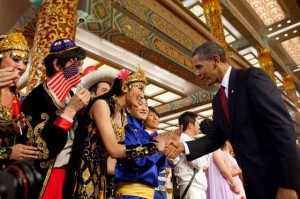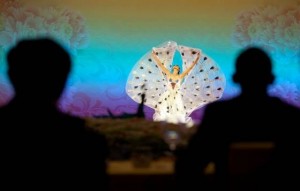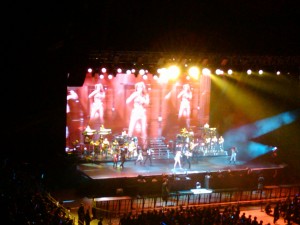By Sedgwick Clark
Everyone’s been raving about Pierre Boulez’s fountain of youth as he nears his 85th birthday on March 26. I missed his Vienna Philharmonic concert at Carnegie Hall on January 16 of music by Schoenberg, Webern, and Mahler. But I caught his pair of Chicago Symphony concerts at Carnegie and was once again riveted by the same revelatory clarity of texture, subtle palette of instrumental color, and vigorous thrust of tempo that first astonished me 41 years ago this month at his initial engagement with the New York Philharmonic.
Very simply, he changed the way I hear music. From those first four Philharmonic concerts, I cannot forget the harmonic clarity and singing of the cellos halfway through the first movement of La Mer; the unexpected orchestral outburst and dramatic surge of waves at the climax of “Asie,” the first song in Ravel’s Shéhérazade, which nearly propelled me from my seat; the whisper-quiet dynamics in Music for Strings, Percussion, and Celesta; and of course that savage Sacre! His Philharmonic years are still the most exciting of my concert-going life.
Those qualities were vividly in evidence at the two Chicago concerts: on January 30, in Ravel’s Le Tombeau de Couperin, Marc-André Dalbavie’s Flute Concerto (2006), and a concert performance of Bartók’s only opera, Bluebeard’s Castle; on January 31, his own Livres pour cordes, Bartók’s Concerto for Two Pianos, Percussion, and Orchestra, and Stravinsky’s complete Firebird.
The only (minor) letdown was the Tombeau, which has never seemed to me to fully engage him and was not that well played; I wish he had programmed Debussy’s elusive Jeux, a work he reveres and has always led with peerless lucidity. His concentration was fully in gear for the Dalbavie concerto, commandeering a brilliant accompaniment to Mathieu Dufour’s sparkling flute playing. But it was Boulez’s glittering performance of Bluebeard that remains most vividly in the memory. He has always been drawn to the early works of favorite composers, and in this case he never lets us forget the young Bartók’s many lustrous debts to Debussy. Some listeners may have missed the devastating emotional impact of the Kertész (Decca) and Kubelik (New York Philharmonic Special Editions) recordings, but those anticipating the usual Boulez insights were not disappointed. Mezzo-soprano Michelle De Young and bass-baritone Falk Struckmann characterized their solo roles outstandingly, especially the latter, who was terrifyingly intense.
In the second concert, Boulez’s incomparable ear for balance and the Chicago’s rich bass sonority combined to produce the most luscious performance of the French composer/conductor’s Livre pour cordes I’ve heard. Originally a two-movement work for string quartet (1948), it was revised 20 years later for full string orchestra and has become a genuine crowd-pleaser to judge by the audience reaction. I already wrote about the second work on this concert—Bartók’s recasting of his Sonata for Two Pianos and Percussion into concerto form—in my February 1 blog. In short, the performance was unsurpassed but I far prefer the Sonata version. The evening concluded magnificently with one of Boulez’s specialties, the complete Firebird, the work that made Stravinsky famous. In his later years the composer seemed embarrassed by the score’s Rimskian opulence and pared down the orchestration for his 1945 suite; and in his early-sixties Columbia recording, which was billed as utilizing “the original 1910 orchestration,” he had the strings play the final peroration with the slashing, sec attacks of the latter suite. Boulez stuck with the sustained, Romantic chords of the original, played to overwhelming effect by the CSO.
Boulez will lead the MET Orchestra at Carnegie on May 16 in Bartók’s rarely programmed folk-nationalist ballet The Wooden Prince and Schoenberg’s expressionist monodrama Erwartung—again, both early works by favorite composers. (Coincidentally, his friend and former Ensemble Intercontemporain colleague, David Robertson, will conduct The Wooden Prince with the New York Philharmonic on February 25-27.)
And then what? The two American orchestras Boulez has conducted and recorded with most often in the past two decades are Chicago, of which he will remain conductor emeritus, and Cleveland. But their music directors are not likely to give up their opportunities to conduct in New York, especially Riccardo Muti, who takes over Chicago in the fall. It’s doubtful that Boulez will make time for the New York Philharmonic. He says he will greatly reduce his conducting to concentrate on composing. We’ve heard that before, but the passing time may strengthen his resolve now.
Clearly, the chances of his conducting in New York again diminish rapidly after his MET Orchestra engagement at Carnegie. Wise music lovers will get their tickets ASAP.


